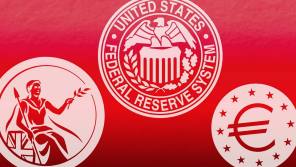

UK inflation expectations have spiked since sterling’s tumble, leading many to take cover in linkers. However, the surge in demand, combined with linkers’ tendency to have a longer duration, convinced the deputy CIO to move away.
Mr Brandreth reduced a position in the L&G All Stocks Index Linked Gilt Index Trust, shifting it to the more conventional L&G All Stocks Gilt Index Trust vehicle.
“Inflation expectations are back to highs. We have used that as an opportunity to move out of index linked to favour gilts,” he said.
“That reduces duration, which we are keen to do given the rise in bond yields.”
He also sanctioned a move away from strategic bond funds in order to capitalise on the central bank intervention.
“Credit spreads have tightened because of the Bank of England’s quantitative easing programme [which has seen it start to buy corporate bonds]. As a result we took profits in strategic bond funds and moved into corporate bond funds with AAA and AA exposure.”
As such, the manager reduced a position in Henderson Strategic Bond, moving some of this money into Church House Investment Grade Fixed Interest.
He has also been increasing European equity exposure in the firm’s model portfolios in the belief valuations remain “supportive” amid political uncertainty.
He said European share prices justified exposure, but acknowledged investor concerns about the political events of 2017.
“Europe is unloved and rightly so – there’s a lot of risk because of the electoral cycle,” he said. “We have elections in the Netherlands, Germany and possibly Italy. But we feel the valuations are supportive at these levels.”
In recent months he has reduced cash from “elevated” levels, boosting a weighting to Europe. In Brown Shipley’s Model Portfolio 5 offering – which sits in the middle of the risk-rated service – cash has fallen by two percentage points, to 6 per cent.
Exposure to Europe rose from 3 per cent to 5 per cent, with Mr Brandreth adding to a position in BlackRock’s European Dynamic fund and continuing to favour the JOHCM Continental European product.
Meanwhile, though some have suggested emerging markets could struggle in the near future, Mr Brandreth has backed the space since mid-2016. In Model Portfolio 5, M&G’s Global Emerging Markets fund represents a 5 per cent position, while half of the portfolio’s 3 per cent in Asia is also classed as emerging market exposure. This means emerging markets make up 6.5 per cent of the portfolio’s 28 per cent allocation to international equity.
“We have been more bullish on Chinese growth,” he said. “There was an enormous move last year for emerging markets which we were keen to participate in. There has been volatility but we have been happy to maintain exposure.”
Part of his strategy has borne fruit elsewhere. Mr Brandreth’s portfolios benefited from the main equity trend in 2016 – with almost 13 per cent in UK equity value via long-term holdings run by JOHCM and Majedie.



